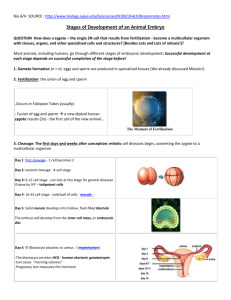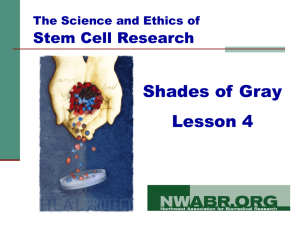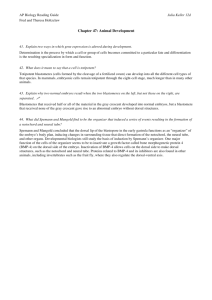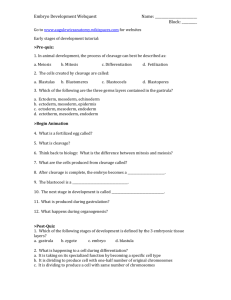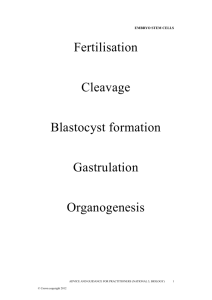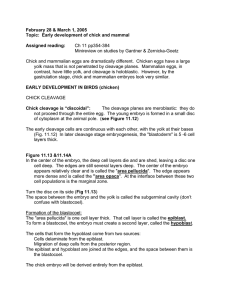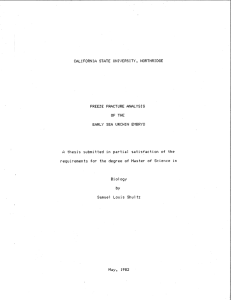File
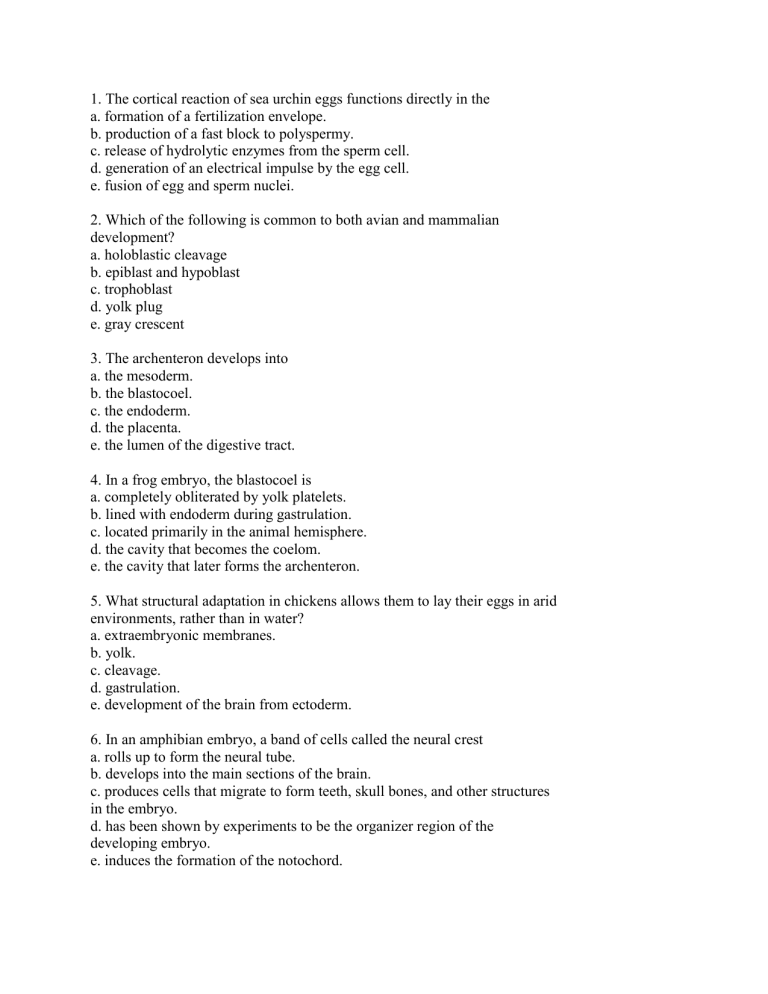
1. The cortical reaction of sea urchin eggs functions directly in the a. formation of a fertilization envelope. b. production of a fast block to polyspermy. c. release of hydrolytic enzymes from the sperm cell. d. generation of an electrical impulse by the egg cell. e. fusion of egg and sperm nuclei.
2. Which of the following is common to both avian and mammalian development? a. holoblastic cleavage b. epiblast and hypoblast c. trophoblast d. yolk plug e. gray crescent
3. The archenteron develops into a. the mesoderm. b. the blastocoel. c. the endoderm. d. the placenta. e. the lumen of the digestive tract.
4. In a frog embryo, the blastocoel is a. completely obliterated by yolk platelets. b. lined with endoderm during gastrulation. c. located primarily in the animal hemisphere. d. the cavity that becomes the coelom. e. the cavity that later forms the archenteron.
5. What structural adaptation in chickens allows them to lay their eggs in arid environments, rather than in water? a. extraembryonic membranes. b. yolk. c. cleavage. d. gastrulation. e. development of the brain from ectoderm.
6. In an amphibian embryo, a band of cells called the neural crest a. rolls up to form the neural tube. b. develops into the main sections of the brain. c. produces cells that migrate to form teeth, skull bones, and other structures in the embryo. d. has been shown by experiments to be the organizer region of the developing embryo. e. induces the formation of the notochord.
7. Differences in the development of different cells in the early frog embryo
(zygote to blastula) are due to a. the differences between meroblastic and holoblastic cleavage. b. the heterogeneous distribution of cytoplasmic determinants, such as proteins and mRNA. c. inductive interactions occurring between the developing cells. d. concentration gradients of regulatory molecules such as BMP–4. e. the position of the cells relative to the zone of polarizing activity (ZPA).
8. During convergent extension, a. cells on the opposite side of the embryo follow converging developmental pathways leading to bilateral symmetry. b. the cells of the neural folds adhere to one another to complete the neural tube. c. the cells of a tissue layer reorganize, forming a narrowed, elongated sheet. d. the dorsal–ventral axis is established. e. cell adhesion molecules are expressed, causing the eight blastomeres to adhere tightly to one another.
9. In the early development of an amphibian embryo, an important
“organizer” is located in the a. neural tube. b. notochord. c. archenteron roof. d. dorsal ectoderm. e. dorsal lip of the blastopore.
10. Any blastomere removed from an 8–cell mammalian embryo can develop into a normal late–stage embryo. This finding supports the idea that a. only the zygote is totipotent. b. the progressive restriction of potency hypothesis applies. c. the first cleavage event must be transverse to the animal–vegetal axis of the zygote. d. cell divisions producing the earliest blastomeres do not result in an asymmetrical distribution of cytoplasmic determinants. e. there is no organizer in mammals.


